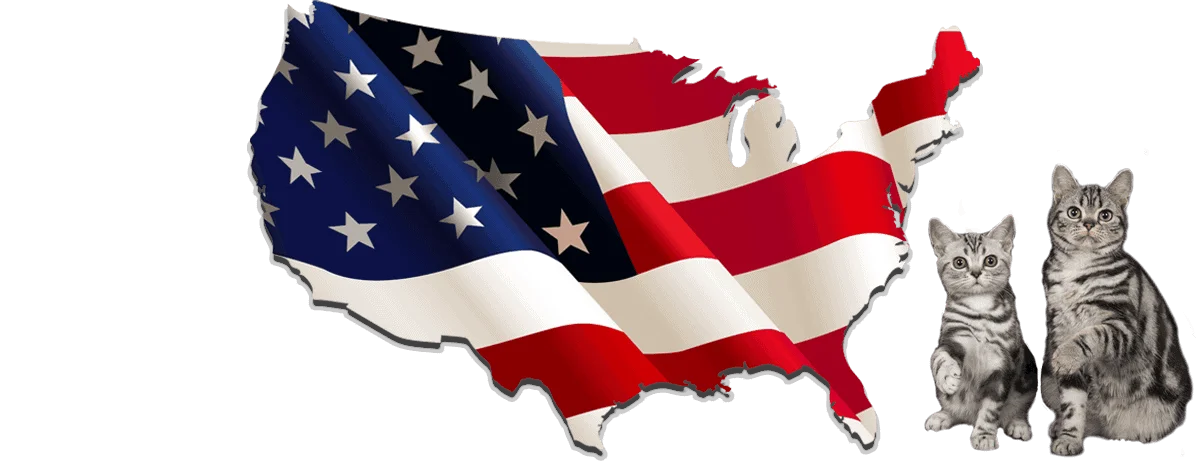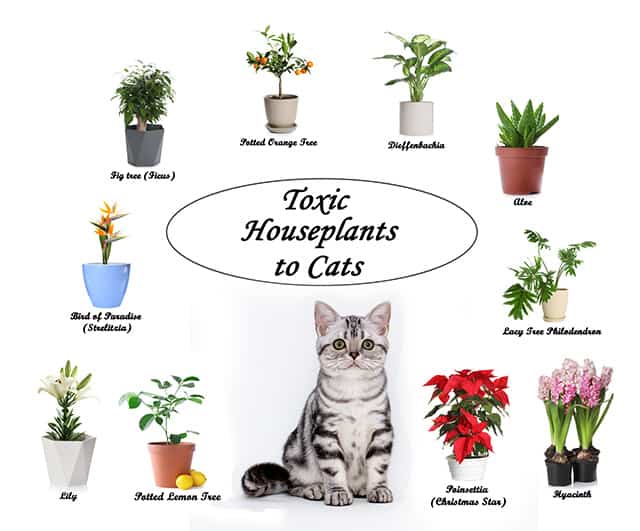
10 Toxic Houseplants to Cats
A surprising number of plants you can buy for your home are toxic to cats (and dogs). While cats are not as prone to chewing as dogs are, they can still end up gnawing on leaves and stems if they suddenly get the urge.
Not limited only to house plants, both plants and flowers found inside and outside the home can vary from mild to severely poisonous to your pet. If your cat ingests any of these toxic plants, they risk suffering a variety of illnesses, including acute kidney failure.
Milla's Kats highly recommends that if you wish to keep house plants, it is best to put them someplace cats can’t reach. Because cats are excellent climbers and jumpers, it’s best practice to use hanging planters. Situate them away from tables, bookshelves, furniture, and other objects that would allow your cat to jump or reach from. Make sure all hanging stems and leaves are out of reach.
If you suspect your cat has ingested something poisonous, there are two 24-hour, 7-days-a-week helplines you can call: ASPCA Animal Poison Control Center (888-426-4435; consultation fee may apply) and Pet Poison Helpline (855-764-7661; a $85 consultation fee applies).
A long but by no means complete list of toxic plants and flowers is included at the bottom of this post. However, here are several that you and your cat are most likely to encounter. We have provided plants that are toxic to cats with pictures to easily identify them.
Lilies
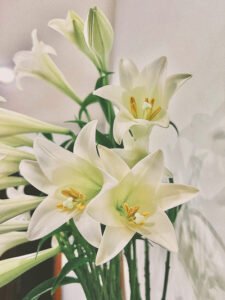
Some lilies are so toxic that they should immediately be removed from the house. Best practice states that you should not have any lily in the house, as even drinking from the water in the pot may cause death for your cat.
While a number of plants have “lily” in the name, the most poisonous of them are: Asiatic lilies, daylilies, Easter lilies, Japanese show lilies, red lilies, rubrum lilies, stargazer lilies, tiger lilies, Western lilies, and wood lilies.
Easter lilies are the most dangerous. If your cat ingests one, they can cause death almost immediately. If your cat isn’t treated as soon as possible, it could die.
Pro Tip: Don’t keep lilies in or outside the house!
Sago Palm

Also known as coontie palm, cardboard palm, cycads, and zamias, Cycas revoluta is sometimes kept inside the house but is often seen planted outside. The sago palm seeds are the most dangerous, but all parts of the plant are toxic.
Symptoms of a cat that has ingested it include vomiting, diarrhea, black and/or tar-like stool, bruising, increased thirst, lethargy, liver failure, and death. Survival is expected only at 50 percent even if the cat is brought in immediately.
Autumn Crocus
Colchicum autumnale, also known as meadow saffron or naked lady, is particularly toxic to cats, dogs, and horses. A fall-flowering plant, all parts of it are toxic and shouldn’t be ingested.
Symptoms a cat may experience if they ingest it include drooling, vomiting, bloody diarrhea, seizures, kidney damage, liver damage, breathing difficulties, and even death. Symptoms may take days to appear.
Rhododendrons & Azaleas
The Rhododendron family is over 1,000-species, including azaleas. All parts of either plant are toxic to your cat.
Symptoms a cat may experience if they ingest it include heart arrhythmias, tremors, weakness, blindness, seizures, coma, gastrointestinal distress (such as lack of appetite, drooling, vomiting, and diarrhea), and death.
Cyclamen

Like the lily, this plant should not be kept indoors. Also known as Persian violet and sowbread, Cyclamen spp. has over twenty species that are typically sold as house plants. The roots are the most toxic, but all parts of the plant have toxic components.
Symptoms a cat may experience if they ingest it include drooling, vomiting, and diarrhea for small amounts and abnormal heart rate and rhythm, seizures, and death for large quantities.
Narcissus

This plant contains approximately fifty species, including daffodils (aka jonquil, paper white, or Narcissus). The bulbs are the most toxic, but all parts of the plant contain the toxic component.
Symptoms a cat may experience if they ingest it include drooling, vomiting, abdominal pain, and diarrhea. Rarer but documented symptoms include cardiac arrhythmia, low blood pressure, convulsions, and breathing difficulties.
Oleander
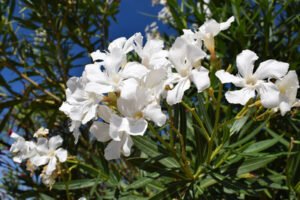
Nerium Oleander (aka white oleander and Rose-Bay) are dangerous to your cat’s heart. The plant is dangerous enough that even the water in its pot can poison your cat. Do not keep it in your home or yard.
Symptoms of a cat that has ingested it include drooling, vomiting, diarrhea, lack of coordination, seizures, tremors, and fatal heart abnormalities.
Kalanchoe
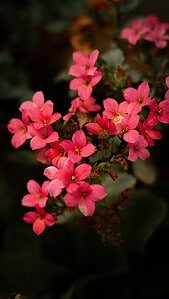
Also known as mother-in-law plant, devil’s backbone, mother-of-millions, and chandelier plant, all parts of this plant are toxic.
Symptoms of a cat that has ingested it include gastrointestinal distress (such as drooling, vomiting, and diarrhea), and more severe symptoms (albeit rarer), including heart arrhythmias, collapse, and seizures.
Hyacinths and Tulips

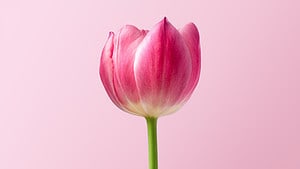 Both types of plant belong to the same family as the abovementioned lily species. The most toxic part of the plant is the bulb, but all parts of the plant contain toxic elements.
Both types of plant belong to the same family as the abovementioned lily species. The most toxic part of the plant is the bulb, but all parts of the plant contain toxic elements.
Symptoms of a cat that has ingested it include drooling, vomiting, diarrhea, tremors, and depression.
Dieffenbachia

Also known as charming dieffenbachia, dumb cane, exotic perfection, giant dumb cane, gold dieffenbachia, spotted dumb cane, tropic snow, and variable dieffenbachia, this plant is common in households.
Symptoms of a cat that has ingested it include drooling, vomiting, difficulty swallowing, and general oral irritation. The plant isn’t deadly, but it causes extreme discomfort and pain in cats.
Toxic Houseplants to Cats Conclusion
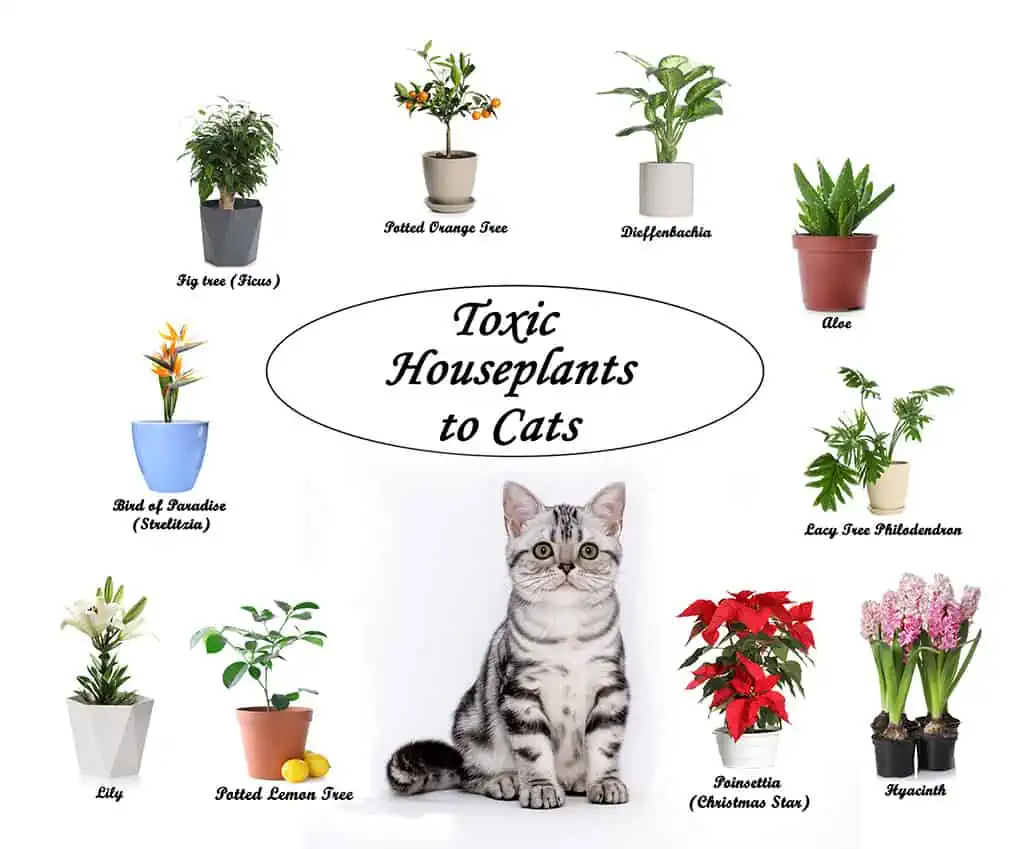
Check the extensive list of plants toxic to cats provided before you buy a new plant as well as Google for more updated information. There are dozens of plants that are dangerous to your cat to varying degrees. To ensure your cat is safe, don’t keep indoor plants poisonous to cats and dogs in the house or plant them in the yard. For less toxic but still problematic plants, place them out of reach with hanging planters.
Toxic Houseplants to Cats Plant List
- Adam-and-Eve
- African Wonder Tree
- Alocasia
- Aloe
- Amaryllis
- Ambrosia Mexicana
- American Bittersweet
- American Holly
- American Mandrake
- American Yew
- Andromeda Japonica
- Angelica Tree
- Apple
- Apricot
- Arrow-Head Vine
- Arum
- Arum Lily
- Asian Lily
- Asparagus Fern
- Australian Ivy Palm
- Autumn Crocus
- Azalea
- Baby Doll Ti Plant
- Barbados Aloe
- Barbados Lily
- Barbados Pride
- Barbados Pride 2
- Bay Laurel
- Bead Tree
- Begonia
- Bergamot Orange
- Bird of Paradise
- Bird of Paradise 2
- Bird of Paradise Flower
- Bird's Tongue Flower
- Bishop’s Weed
- Bitter Root
- Black Calla
- Black Cherry
- Black Laurel
- Black Nightshade
- Bobbins
- Bog Laurel
- Borage
- Boxwood
- Branching Ivy
- Brazilwood
- Bread and Butter Plant
- Brunfelsia
- Buckeye
- Buckwheat
- Buddhist Pine
- Burning Bush
- Buttercup
- Butterfly Iris
- Caladium
- Calamondin Orange
- California Ivy
- Calla Lily
- Cape Jasmine
- Caraway
- Cardboard Cycad
- Cardboard Palm
- Cardinal Flower
- Carnation
- Castor Bean Plant
- Ceriman
- Chamomile
- Chandelier Plant
- Charming Dieffenbachia
- Cherry
- Chinaberry Tree
- Chinese Evergreen
- Chinese Jade
- Chives
- Choke Cherry
- Christmas Rose
- Chrysanthemum
- Clematis
- Climbing Bittersweet
- Climbing Lily
- Climbing Nightshade
- Clivia Lily
- Coffee Tree
- Coleus
- Common Privet
- Coontie Palm
- Cordatum
- Corn Plant
- Cornstalk Plant
- Cow parsnip
- Cowbane
- Cuckoo-pint
- Cutleaf Philodendron
- Cycads
- Cyclamen
- Daffodil
- Dahlia
- Daisy
- Day Lilies (many varieties)
- Deadly Nightshade
- Desert Azalea
- Desert Rose
- Devil's Backbone
- Devils Ivy
- Dieffenbachia
- Dock
- Dog Daisy
- Dog Hobble
- Dogbane Hemp
- Dracaena
- Dumbcane
- Dwarf Poinciana
- Easter Lily
- Easter Rose
- Eastern Star
- Elephant Ears
- Elephant-Ear Begonia
- Emerald Feather
- English Holly
- English Ivy
- English Yew
- Epazote
- Eucalyptus
- European Bittersweet
- European Holly
- Everlasting Pea
- Exotica
- False Bittersweet
- False Queen Anne’s Lace
- Feather Geranium
- Fern Palm
- Fetter Bush
- Fetterbush
- Fiddle-Leaf
- Fig
- Figwort
- Fire Lily
- Flag
- Flamingo Flower
- Fleabane
- Florida Beauty
- Florist's Calla
- Foxglove
- Franciscan Rain Tree
- Garden Calla
- Garden Chamomile
- Garden Hyacinth
- Gardenia
- Garlic
- Geranium
- Geranium-Leaf Aralia
- Giant Dracaena
- Giant Dumb Cane
- Giant Hogweed
- Glacier Ivy
- Gladiola
- Gloriosa Lily
- Gold Dieffenbachia
- Gold Dust Dracaena
- Golden Birds Nest
- Golden Pothos
- Golden Ragwort
- Good Luck Plant
- Grapefruit
- Grass Palm
- Greater Ammi
- Green Gold Naphthysis
- Ground Apple
- Groundsel
- Hahn's Self Branching English
- Ivy
- Hashish
- Hawaiian Ti
- Heartleaf Philodendron
- Heavenly Bamboo
- Hellebore
- Hercules' Club
- Hills of Snow
- Holly
- Horse Chestnut
- Horsehead Philodendron
- Horseweed
- Hortensia
- Hosta
- Hurricane Plant
- Hyacinth
- Hydrangea
- Impala Lily
- Indian Apple
- Indian Borage
- Indian Hemp
- Indian Pink
- Indian Rubber Plant
- Inkberry
- Iris
- Iron Cross Begonia
- Ivy Arum
- Jack-in-the-pulpit
- Jade Plant
- Japanese Show Lily
- Japanese Yew
- Jerusalem Cherry
- Jerusalem Oak
- Jonquil
- Kaffir Lily
- Kalanchoe
- Kiss-me-quick
- Klamath Weed
- Kudu Lily
- Lace Fern
- Lacy Tree Philodendron
- Lady-of-the-night
- Lambkill
- Lantana
- Larkspur
- Laurel
- Lavender
- Leatherflower
- Leek
- Lemon
- Lemon Grass
- Lemon Verbena
- Lenten Rose
- Lily
- Lily of the Palace
- Lily of the Valley
- Lily-of-the-Valley Bush
- Lime
- Lobelia
- Locust
- Lord-and-Ladies
- Lovage
- Madagascar Dragon Tree
- Maidens Breath
- Malanga
- Maleberry
- Mapleleaf Begonia
- Marble Queen
- Marijuana
- Marjoram
- Mauna Loa Peace Lily
- Mayapple
- Mayweed
- Meadow Saffron
- Medicine Plant
- Metallic Leaf Begonia
- Mexican Breadfruit
- Milfoil
- Milkweed
- Mint
- Mistletoe “American”
- Mock Azalea
- Mole Bean Plant
- Morning Glory
- Morning-Noon-and-Night
- Moss Rose
- Mother of Millions
- Mother-in-Law
- Mother-In-Law Plant
- Mother-in-Law’s Tongue
- Mum
- Naked Lady
- Nandina
- Narcissus
- Nasturtium (Watercress)
- Needlepoint Ivy
- Nephthytis
- Nicotiana
- Nightshade
- Octopus Tree
- Oilcloth Flower
- Oleander
- Onion
- Orange
- Orange Day Lily
- Oregano
- Oregon Holly
- Ornamental Pepper
- Pacific Yew
- Painter's Pallette
- Palm Lily
- Panda Plant
- Paper White
- Paraguayan Jasmine
- Parsley
- Peace Begonia
- Peace Lily
- Peach
- Peacock Flower
- Pencil Cactus
- Peony
- Perennial Pea
- Periwinkle
- Philodendron Pertusum
- Pie Plant
- Pieris
- Pig Lily
- Pigtail Plant
- Pink Pearl
- Pinks
- Plantain Lily
- Plum
- Plumosa Fern
- Poinciana
- Poinsettia
- Poison Daisy
- Poison Hemlock
- Poison Parsnip
- Portulaca
- Prayer Bean
- Pride-of-India
- Primrose
- Privet
- Purslane
- Racemose Asparagus
- Ragwort
- Ranger’s Button
- Red Emerald
- Red Lily
- Red Princess
- Red-Marginated Dracaena
- Rex Begonia
- Rhododendron
- Rhubarb
- Ribbon Plant
- Ridderstjerne
- Rock Moss
- Roman Chamomile
- Rosebay
- Rubrum Lily
- Running Myrtle
- Sabi Star
- Sacred Bamboo
- Saddle Leaf
- Sago Palm
- Satin Pothos
- Scented Geranium
- Schefflera
- Seaside Daisy
- Seven Bark
- Shamrock Plant
- Shatavari
- Showy Daisy
- Silver Dollar
- Silver Jade Plant
- Skunk Cabbage
- Snake Lilly
- Snake Plant Solomon’s Lily
- Sorrel
- Sowbread
- Spanish Thyme
- Spindle Tree
- Split Leaf Philodendron
- Spotted Dumb Cane
- Sprengeri Fern
- Spring Parsley
- John’s Wort
- Staggerbush
- Starch Root
- Stargazer Lily
- Starleaf
- Stinking Chamomile
- Straight-Margined Dracaena
- Striped Dracaena
- Superb Lily
- Sweet Cherry
- Sweet Pea
- Sweet William
- Sweetheart Ivy
- Swiss Cheese Plant
- Tahitian Bridal Veil
- Tail Flower
- Taro
- Taro Vine
- Tarragon
- Texas Umbrella Tree
- Ti-Plant
- Tiger Lily
- Tobacco
- Tomato Plant
- Tree Philodendron
- Tree Tobacco
- Tropic Snow
- True Aloe
- Trumpet Lily
- Tulip
- Umbrella Leaf
- Umbrella Tree
- Variable Dieffenbachia
- Variegated Philodendron
- Variegated Wandering Jew
- Vinca
- Virgin’s Bower
- Wahoo
- Wake Robin
- Wandering Jew
- Warneckei Dracaena
- Water Flag
- Water Hemlock
- Wax-Leaf
- Weeping Fig
- Western Yew
- White Heads
- Wild Arum
- Wild Calla
- Wild Carnation
- Wild Coffee
- Winter Cherry
- Winterberry
- Wisteria
- Wood Lily
- Yarrow
- Yellow Oleander
- Yesterday, Today, Tomorrow
- Yew
- Yew Pine
- Yucca
Houseplants safe for cats list can be found at https://be.chewy.com/which-plants-are-poisonous-to-cats-a-complete-guide/
![]()

